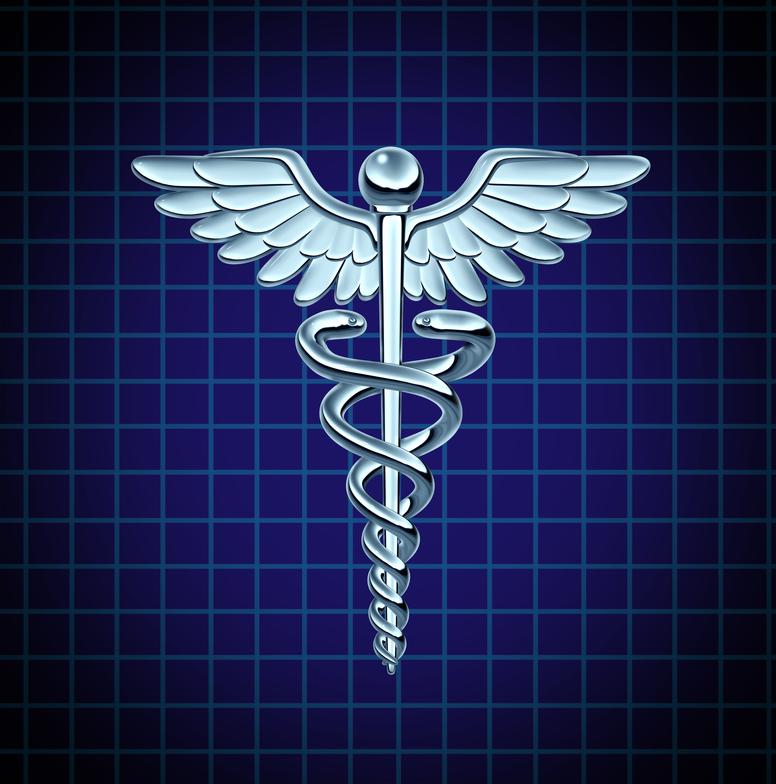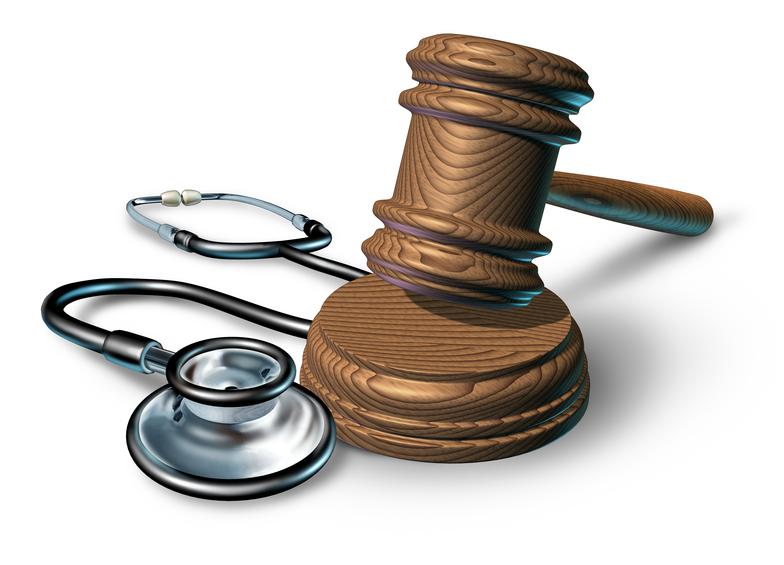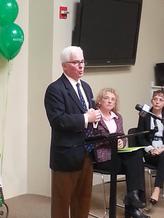Care Problems and Controversies Affecting the
Rare Disease Population
Munchhausen Syndrome by Proxy
When a caregiver purposely exaggerates, falsifies information, or even creates symptoms in a child under her care to make it seem the child is ill, that caretaker is considered to be a perpetrator of Munchausen Syndrome by Proxy (MSBP). Clinical presentation of a child in the care of an MSBP perpetrator may include symptoms such as seizures, vomiting, bleeding, cardiac arrest, apnea, sepsis, and multiple organ involvement (1).
MSBP perpetrators have been known to do such things as smother their child to unresponsiveness, administer poisons, and withhold foods to make their child ill enough to need medical intervention(2). The unifying feature for all MSBP cases however, is that even if the clinician did not witness the event, the child’s symptoms are brought on by something the perpetrator did to the child. Cases have been proven by surveillance videos in hospital rooms in which hospital personnel observed a caretaker engaging in actions such as withholding a needed medication, smothering, administering poisons or foreign substances to the child, and other disturbing behaviors 3,4).
1. Zylstra, R.; Miller, K.; Stephens, W. Munchausen Syndrome by Proxy: A Clinical Vignette.
Primary Care Companion to the Journal of Clinical Psychiatry . 2(2): 4244. 2002.
2. Kaneshiro, N.; Zieve, D.: Black, B.; A.D.A.M. Editorial team. “Munchausen syndrome by proxy.” MedlinePlus. 2013.
3. Feurtado, J. “Munchausen by Proxy Syndrome: A Deadly Disorder.” AllPsyche Journal. 2004. ( http://allpsych.com/journal/munchausen.html )
4. Kamerling LB, Black XA, Fiser RT. “Munchausen syndrome by proxy in the pediatric intensive care unit: An unusual mechanism.” Pediatr Crit Care Med. (3):305307. 2002.
Rare New England (RNE) Addresses Challenges in the
Rare Disease Community
Rare New England (RNE) exists to help patients and their families successfully navigate the health care system. Today more than ever, education and effective communication are essential keys to a successful healthcare experience, especially for the rare disease community.
RNE's mission is to provide specialized education and the tools/resources necessary for effective communication with healthcare providers and the healthcare system.
RNE is aware of the unfortunate outcomes and awful experiences that rare-disease patients and families have endured within the health care system. The process is not only complex and confusing, but it can be an ordeal and frightening for this patient population. They fear overly-suspicious clinicians, unwarranted social service investigations, and a disruption of medical care. These fears expand such that patients and families with prior bad experiences often avoid emergency care for fear of landing in some unexpected situation that spirals out of control among clinicians unfamiliar with the complexities of their case. Such a scenario can lead to unfortunate, unwarranted accusations of Medical Child Abuse, fabricated illness or Munchausen Syndrome by Proxy, as well as somatoform disorder, conversion disorder, malingering, or Munchausen Syndrome in older children and adults.
RNE believes that the basis of many unfortunate cases comes from the challenges inherent in diagnosing rare diseases when symptoms are hard to explain and their nature may not fit within standard diagnostic criteria. Furthermore, the pressures of time and workload on health care providers often interferes with an earnest attempt to diligently investigate medical histories and/or consult current or former providers already familiar with a particular case. Without this background investigation, clinicians are more likely to make quick or unfounded impressions and develop suspicions not based in fact. Sometimes strong emotions are elicited. The unfortunate result is too often an unfair and misdirected approach to patient care which can be devastating to the patient, families and sometimes providers who take a position on behalf of the involved patient.
The rare disease community is well aware of the enormous challenges within today's health care system. The fantastically complex system that involves healthcare providers, administrators, social services, and even school systems struggles to meet the needs of "ordinary" patients; however, patients and families with rare and complex medical disorders present extraordinary challenges to the already over-burdened system. Healthcare providers, administrators, social services, school systems and many others face challenges everyday just to provide routine care to the populations they serve.
RNE has spoken with the patient community, their families, as well as health care providers about improving the health care experience. One key strategy for patients is having the knowledge and insight to catch misunderstandings and prevent problems before they occur. Effective communication skills are essential, as well as a detailed understanding of the system, including its limitations. They must have an appreciation of the roles and responsibilities of all providers, and the legal and institutional demands placed upon them. RNE collaborates with the range of stakeholders involved in clinical care, including treating physicians, child protection services, state agencies, and other patient advocacy organizations, in order to create opportunities for developing improved guidelines and protocols that preserve effective medical care while protecting patients and families from unnecessary health care crises. Continued dialogue by RNE with the many stakeholders will unmask other needs and options for improving care.
RNE wishes to see improved care and services for the rare disease community. This starts with education and two-way communication, including ongoing honest and respectful dialogue among patient/patient families and representatives of the healthcare system. Health care providers and administrators must understand and be sensitive to the often overwhelming challenges the rare disease community faces. Likewise the rare disease community needs to acknowledge the incredible complexity of current health care and determine what are realistic expectations and what is not practical. In order for the process to improve, all participants in the dialogue must do a better job of listening. That is the essential starting point on which to build the needed improvements.
Child Protection Strategies – Tricky Decisions
MCA and MSBP are both very serious disorders that endanger the health, well-being, and possibly the life of a child under a perpetrator’s care (1,2). Children frequently visiting emergency rooms and multiple physicians may be suspected of being subjected to harm by a perpetrator of either, or both, of these scenarios, and swift action by medical staff may save a life.
However, a child presenting with a complicated medical history must be provided consideration by medical staff of having a rare and complex disorder, if to truly act in best interest of the child. A child with a rare disease may have multisystem involvement and exhibit many of the symptoms that can be easily confused with those seen in MSBP. After all, the rare disease patient is ill and many rare diseases affect various organs, producing many symptoms. These ill children are under the care of many clinicians and must visit multiple facilities for appropriate specialized care.
1. Kaneshiro, N.; Zieve, D.: Black, B.; A.D.A.M. Editorial team. “Munchausen syndrome by proxy.” MedlinePlus. 2013.
2. Allison, T. “ Proving Medical Child Abuse: The Time is Now for Ohio to Focus on the Victim and Not the Abuser.” 25 J.L. & Health 191. 2012. (http://engagedscholarship.csuohio.edu/jlh/)
Medical Child Abuse (MCA)
MCA is alleged in situations where children have multiple consults with physicians, or undergo many medical tests, procedures, or surgeries, in an attempt to diagnose and treat symptoms the caregiver describes to the doctors (1). If the child does not truly have medical problems as the caregiver has described them, and the medical care given is actually unnecessary, the child is considered a victim of “overmedicalization”, which means the child has had unnecessary and harmful, or potentially harmful, medical procedures and/or interventions, for no true medical reason.
1. Allison, T. “ Proving Medical Child Abuse: The Time is Now for Ohio to Focus on the Victim and Not the Abuser.” 25 J.L. & Health 191. 2012. (http://engagedscholarship.csuohio.edu/jlh/).
Conversion Disorder
According to the NIH, "Conversion disorder is a condition in which a person has blindness, paralysis, or other nervous system symptoms that cannot be explained by a physical illness or injury" (1). The understanding is that the patient has experienced an extremely traumatizing event that produces a psychological effect. Belief holds that the patient recovers through time and psychotherapy.
1. "Conversion Disorder". Genetic and Rare Diseases Information Center (GARD. NIH. 2016. (https://rarediseases.info.nih.gov/diseases/6191/conversion-disorder).
Tips on Obtaining Legal Counsel
Coming Soon!
Helpful Articles
Dealing with Accusations of Medical Child Abuse/Munchhausen's Syndrome by Proxy, and
Conversion Disorders:
1."Problems with diagnosing Conversion Disorder in response to variable and unusual symptoms."
Reference: Barnum, R. “Problems with diagnosing Conversion Disorder in response to variable and unusual symptoms” Adolescent Health, Medicine and Therapeutics 2014:5 67–71.
Abstract: Conversion Disorder (CD) is a diagnosis offered to explain signs and symptoms that do not correspond to recognized medical conditions. Pediatric patients with variable, vague, and multisystem complaints are at increased risk for being diagnosed with CD. Little is known about the impact of such a diagnosis. In making such diagnoses, it is likely that pediatric providers hope to encourage patients to access mental health care, but no basis exists to show that these diagnoses result in such access in any useful way. This article presents the case of a child with Ehlers-Danlos Syndrome, who had been previously (incorrectly) diagnosed with CD and referred for mental health care. It offers commentary based on interviews with other pediatric patients with similar experiences – conducted in collaboration with the Ehlers-Danlos National Foundation. These cases indicate that CD diagnoses can seriously undermine patients’ trust in doctors, and can create such defensiveness that it may interfere with (especially) patients’ abilities to engage with mental health services. Such interference is an important problem, if the diagnosis is accurate. But, in the (more likely) event that it is not accurate, this defensiveness can interfere with both important mental health care and further ongoing necessary medical care.
2. "Rare Disease Caretaker Vs. Munchausen Syndrome By Proxy/Medical Child Abuse Perpetrator: A Comparison of Psychological Profiles"
Reference: Gortze, Julie, RN “Rare Disease Caretaker Vs. Munchausen Syndrome By Proxy/Medical Child Abuse Perpetrator: A Comparison of Psychological Profiles” Published by MitoAction (www.mitoaction.org), March 12, 2015. http://www.mitoaction.org/advocacy
Abstract: This article presents the contrasts and similarities characteristics between families affected by both, rare disorders and a Munchausen Syndrome by Proxy perpetrator. Explanation is provided per the challenge to care teams in differentiating symptom manifestations involving a rare disease and those of a caretaker purposely harming a child through a form of medical manipulation. Further, insight is shared as to the emotionally harmful effects on a family falsely accused.
To read this article click here.
3. "Preparing for Emergencies: Sweat the Small Stuff, Lead the Way to Empowerment"
Reference: Gortze, Julie, RN, Revised May 2016. Published by Rare New England.
Abstract: Facing an emergency medical situation can be stressful for anyone but for those affected by a rare disorder feelings of panic can arise with the mere thought of having to be cared for my an emergency team not informed about their disorder. Patients and caregivers may feel anxious and frightened, medical care might be delayed, incorrect treatments could be initiated, and disease diagnoses misunderstood while leading to suspicions of psychological problems in the patient or family members. This article explains how to make a "Control Packet", a combination of documents highlighting the patient's medical history, and how to ensure this packet reaches the appropriate hands in order to accelerate appropriate medical care.
Difficulties with Assessments in Complicated Medical Cases
According to the NIH, over 6,500 different rare diseases exist in the United States, in addition to undiagnosed conditions, and less rare disorders that are still difficult to diagnose and treat.
Combined, more than 30 Million adults and children in the United States (about 10% of the population) are affected by a rare disease, a complex medical disorder, or an undiagnosed condition (1)
Many Rare Disease patients have yet to be recognized. Rare Disease patients surveyed in the 2014 Shire Rare Disease Impact Report, report seeing 6 to 8 different doctors, over 7 to 8 years, before their Rare Disease was correctly diagnosed (2). Many of these patients report receiving several incorrect diagnoses, with incorrect treatment plans, before being identified as a rare disease patient.
Patients with chronic illness exhibit multisystem manifestations and many disease presentations can intertwine, even with common disorders, making it difficult for the overburdened clinician who simply cannot be expected to know everything about all rare disorders. Adding fact that there is often no available testing to enable a definitive disease result, many rare and complicated disorders must be diagnosed through a clinical process (3). To make this more difficult, even when a physician seems on the right path to correct diagnosis, many rare disorders do not yet have specific criteria to follow for diagnosis or treatments within a specific disease community, resulting in disagreements between not only uninformed physicians, but between physicians diagnosing and treating the same diseases.
This certainly makes for a dilemma for everyone involved, including the patient, family, and entire medical team as they work to prepare for proper medical care for the patient, especially when not everyone agrees on diagnosis and direction.
1. 2015 "State Policy Progress Report: A Roadmap for State Improvement” National Organization for Rare Disorders. 2015 (http://rarediseases.org/advocate/take-action-locally/stateprogressreport/).
2. Rare Disease Impact Report: Insights from patients and the medical community” Shire and External Advisory Board. 2013 (https://globalgenes.org/rare-disease-impact-report/)
3. Institute of Medicine (US) Committee. "Accelerating Rare Diseases Research and Orphan Product Development". Field MJ, Boat TF, editors. Washington (DC): National Academies Press (US); 2010.
Click on the above link to see a video presentation by bioethicist Jessica Shriver, MATh, MSB and Family Law attorney Jim Ianiri, JD on medical decision-making and patient/ family rights for pediatrics and adult medicine. This presentation was made at a Mito New England meeting in April, 2014, and was sponsored by the national non-profit MitoAction (www.Mitoaction.org).





